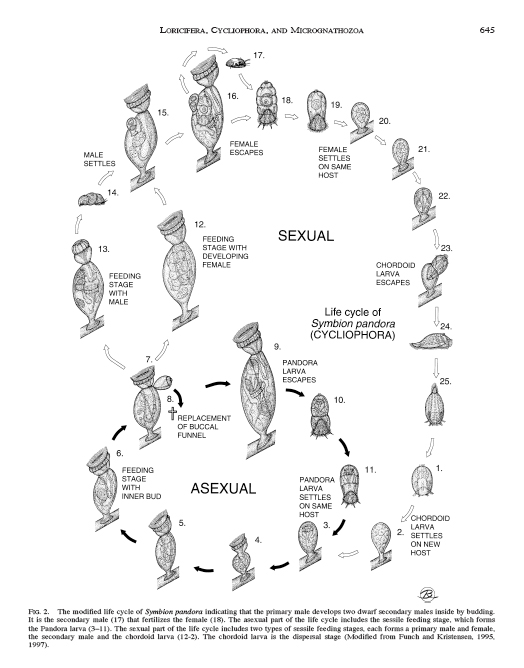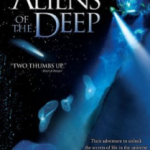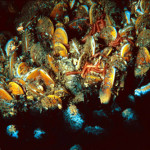
The Loriciferans were first described in 1983 and since then around 20 species were described with at least 80 species waiting in the wings for their official names. However, Loricefera were known since the 70’s but because of there complex life cycle with a larva (Higgins-larva) that looks completely different from the adults, things got delayed. All the species range in size from 108-405 micrometers and live interstitially (between grains of sediment in the ocean) including the deep sea.
To say the reproductive life cycle is complex or just plain freaky would be an understatement.
- In several species, the larvae can develop 4-12 larvae inside them. All of these larvae look the same as the original. This is a B-movie horror plot if there ever was one. Imagining having a child, a few days later they have children of their own and all are identical.
- In the group, the life cycle varies from species to species and in the words of an expert “more confusingly, may vary depending on the feeding condition of the larva in the same species.” Imagine feeding your child creamed carrots instead of pureed peas n’ ham and sending your child down a completely different developmental and reproductive cycle. I’m sorry little Jimmy you like mashed bananas, you’re a hermaphrodite.
- In one species, larvae moult into an individual with no gonads. “O’ damn where did my testicles go?” They also have no toes (the name for flippers in the group).
- In one species, the larvae are bigger than the adults and develop a humongous ovary. This ovary can threaten the existence of whole cities. That last part was made up.
- In the same species as directly above this larvae forms a cyst-like stage. More larvae then can grow inside of it which then moult, get very big, and form big ovaries. Does this remind anyone else of the plot of Gremlins? No water and no feeding after midnight!
Another group recently described is only known from one species which lives on the setae of lobsters’ mouthparts. The group is Cycliophora and the species, Symbion pandora. Pandora because its lifecycle is a black box of evil, mystery, and of course really strange sex. That’s it at the top of this post. Yeah…complicated.
- There is sexual and asexual phase. A feeding and nonfeeding phases. A freaky phase and really freaky phase.
- The asexual phase has two types of feeding animals. The first type is called the Pandoral larva and houses the primary male and female inside a brooding chamber it does this by losing both its digestive system and head. I am told that human males also call loose there brains and replace them with reproductive organs.
- Budding is common. But not a new little you on the outside but new little you’s on the inside. Budding is internal.
- The sexual phase includes a primary male that lacks a penis or true testis. What’s the point then? That male settles on a feeding animal. If the feeding animal has a female inside this cues the male to develop some ‘equipment’.
- Howevever, the ‘equipment’ is not his own. He develops two males with a necessary gear.
Can’t get enough? Go download (it appears to be open access) and read An Introduction to Loricifera, Cycliophora, and Micrognathozoa.






A second species of cycliophoran, Symbion americanus, was described a couple of years ago living on a different lobster species from S. pandora.
Christopher,
Thanks for the information.
Great fun! I’m printing out that diagram to post over my desk should I ever again start whining about how complicated my life is.